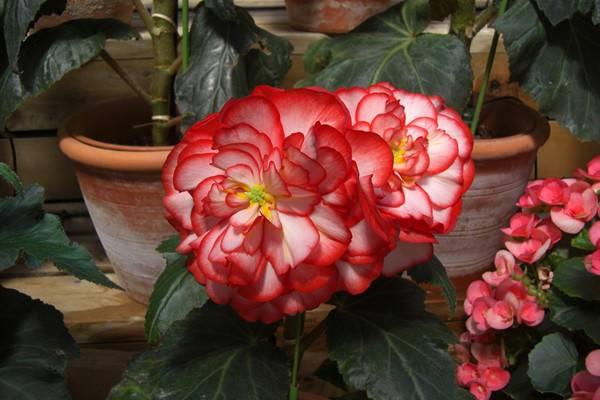How to grow delphinium
Last Update :2024.11.12
Article Catalog
Delphinium home cultivation methods
Things to note when raising delphinium at home
Delphinium, the wild original species of delphinium, is mainly produced in the temperate zone of the northern hemisphere. It has strong cold resistance and drought tolerance, but is not resistant to high temperatures. How to grow this swallow-like flower in our country?

Delphinium home cultivation methods
How to breed delphinium at home
Sowing
Delphinium can be sown in both spring and autumn. If Sowing in autumn must be carried out in mid-September. If sown in spring, the flowering period will be in September, and if sown in autumn, the flowering period will be in May of the following year. For flowers sown in spring, time should be estimated to avoid blooming in the heat of midsummer.
Repot maintenance
When the delphinium grows 2 true leaves, it needs to be transplanted into a small pot with soil and wait until the seedlings grow up. Change the basin again. Because Delphinium has a small root system, you need to be extra careful when changing pots to avoid damaging the root system and causing slow growth or even death of the plant.
After sowing delphinium, the soil must be kept moist. The easiest way is to cover it with some grass and gradually remove the cover after the seedlings emerge.
Water and fertilizer management
Watering: When watering delphiniums, you must follow the principle of seeing dry and wet, keeping the soil moist but avoiding water accumulation. Water appropriately during the flowering period to avoid excessive drying of the soil, which may lead to poor flower shape.
Fertilization: Apply fertilizer once every half month during the growth period of delphinium, and add phosphorus and potassium fertilizers 2-3 times before flowering. Keeping the soil moist during the flowering period of delphinium can extend the flowering period. Depending on the growth status of delphinium, apply cake fertilizer and water 1-3 times a month.
Light
Delphinium loves light, and full-sun care will help promote flowering, prevent the plant from growing too long, and keep the plant short and beautiful.
Height control
After delphinium is repotted, paclobutrazol can be used to control the height of the plant. The specific method is: apply 0.5 once every 2 weeks % paclobutrazol.

Things to note when raising delphinium h2>
Seed collection
Delphinium seeds mature in August-September, because the seeds mature first and bloom later. The fruit will split naturally, so harvest it in time to avoid falling apart.
Pests and diseases
Delphinium common diseases include black spot, root rot, and chrysanthemum leaf nematode, which damage the leaves, flower buds and stems.
When delphinium disease occurs, the diseased plants should be removed promptly, burned intensively, and sprayed with 50% thiophanate methyl wettable powder diluted 500 times for control.
Common insect pests of delphinium include aphids and armyworms. Use 10% insecticide emulsifiable concentrate diluted 2000 times to kill them.
Delphinium is toxic
The whole plant is toxic, and the seeds are even more toxic. They mainly contain terpene alkaloids. If eaten by mistake, they can cause nervous system poisoning, which can be serious. He suffered from convulsions and died of respiratory failure. Flower lovers who have naughty children at home must save the seeds and keep them out of reach of children.

Things to note when raising delphinium at home
- END -
The difference between peach eggs and peach beauties, how to keep them in good condition

There are several differences between Peach Egg and Peach Beauty. In terms of lea...
Plant flowers and grass, how about some special plants?

Do you feel tired of planting flowers and grass? Want to explore some new, magical...